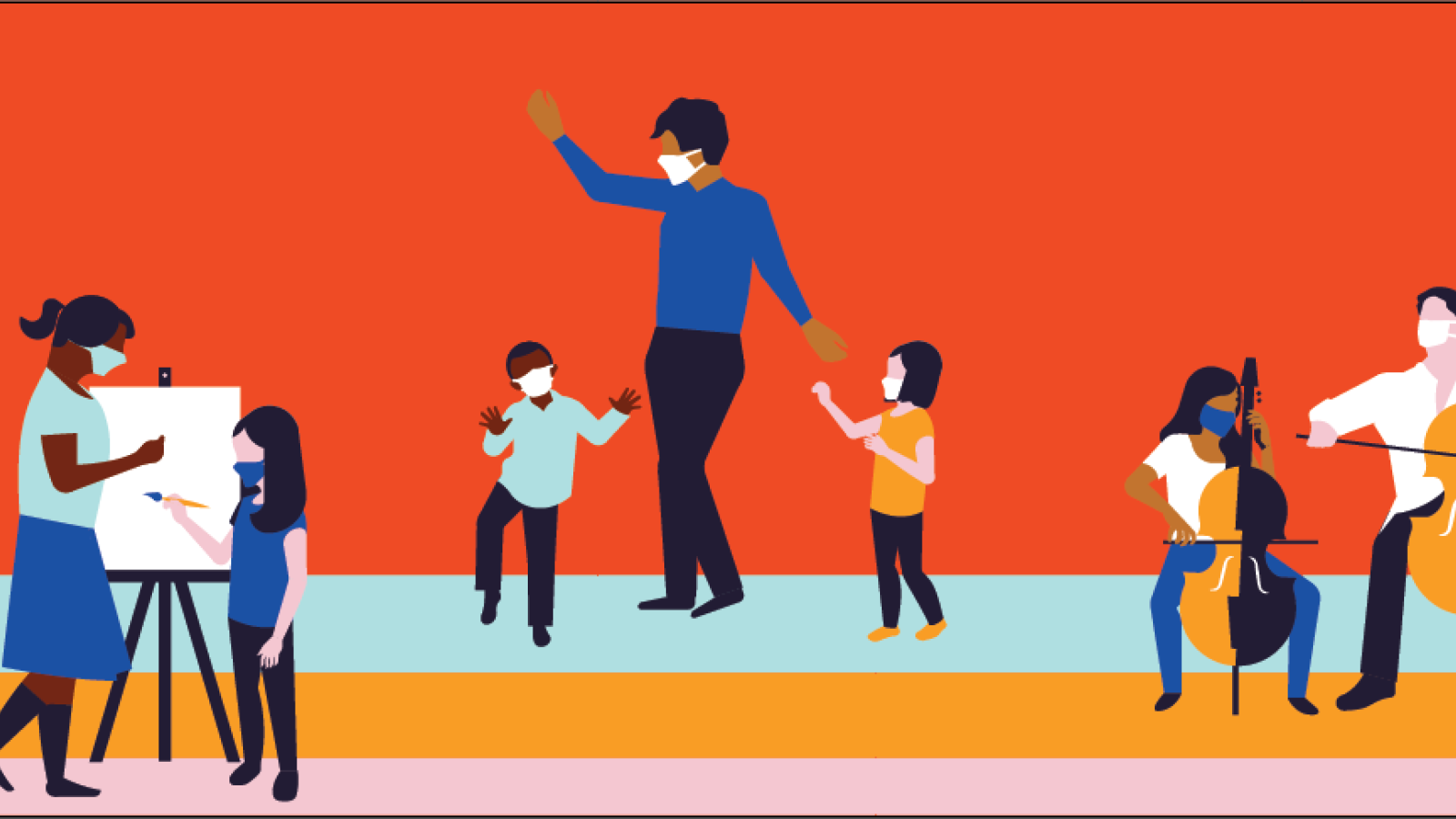When high schools treat arts as a core academic subject, SAT score averages are visibly higher compared to when the schools treat the arts as an optional subject.
Essential Benefits of Arts Education for Students
Secondary school arts education is undeniably a consequential and vital experience for students to grow personally, socially, and intellectually. It benefits students inside and outside of the classroom in numerous ways. This article examines the various core standards for arts education and how they impact student development.
The Arts Education for All Act: A Catalyst for STEAM Education
The demand for STEM practitioners is growing in tandem with the demand for workers who are equipped to think about their social and ethical aspects. The intrinsic values of the arts, such as empathy, community, and imagination, combined with the logic of the STEM model, create a more well-rounded experience for youth. Agnes Chaves, a new media artist and founder of STEMarts Lab, advocates for the idea that STEAM education practices allow students to understand the ethics behind new technologies and their impact on nature and humanity when approaching a problem. Particularly for larger societal problems such as digital inequity, it’s crucial that students perceive themselves as caretakers of the planet and global citizens.
In the News: August 2022
TBT: Education, Gamification, & Public Policy
Virtual Reality in Arts Education
Technology in the K-12 Art Room; Why, Where, and How to Make It Happen
So Why is there an “A” in STEAM?
In the early 2000s, the state of science, technology, engineering, and math education troubled policy makers in the United States. Together, these four subjects became known as STEM. In more recent years there has been a shift to add arts into this focus, making the acronym now STEAM (science, technology, engineering, arts, math). However, there isn’t a clear outline or framework of what exactly a STEAM education is, or how schools and classrooms are supposed to be implementing this learning. Even among the academic articles about STEAM, there is disagreement about STEAM, its definition and implementation.
Considerations for Gamifying Education
Educators who are interested in implementing gamification into their lessons should consider their goal and learning style of their students. This article details three important factors to consider when planning a gamified learning experience: motivation, generational differences, and design. The article also includes examples of applications that use gamification in music learning that can be applied by arts managers.
STEAM Education and the Lego Model
In recent years, there has been a shift to an argument for STEAM (Science, Technology, Engineering, Arts, and Math), for the inclusion of the arts as one of the subjects that need to be focused on. In fact, the Every Student Succeeds Act (ESSA) includes the arts and music as part of a “well-rounded education,” which are eligible for receiving funding from the government. Changes in legislation have led to a push for wider adoption of this framework for education, but some educators feel that they do not have the training necessary to implement these new practices. Companies like LEGO Education are creating models and projects that make integrating arts and creativity with STEM practices easy in the classroom.
Gamification in Arts Education
Recently, arts organizations have also sought to gamify different aspects of their institutions to engage visitors, increase fundraising, or improve marketing objectives. Although many industries—like the arts—are developing gamification concepts, many are not applying them in the most effective way. For educational programs to effectively gamify the learning experience they must understand gamification and all its parts.
Technology on Tour: Week 2
White Paper Wednesday: The Classroom, Arts, and Tech
How Can MOOC Providers Create an Interactive Learning Experience in the Arts?
In this new publication, AMT Lab Contributor Wanqi Peng shares her research on the current state of arts education in Massive Open Online Courses (MOOCs). Included in the report is an overview of the field, a summary of trends in digital arts courses, and a course study following a pioneer of online arts education. Download the full report here.
Arts Education in MOOCs
#TBT Back to School Edition: Arts, Technology and Education
Now that summer is officially over and autumn is upon us, AMT Lab is taking a look forward to this exciting school year, and taking a look back at all of our content centered around the intersection of arts, technology, and education. From MOOC’s, to mobile technologies in schools, we've always been interested in the way technology allows educators and students to connect.
Tweet the Arts on National Arts Advocacy Day
Next Tuesday, April 13th, is National Arts Advocacy Day, when more than 500 arts advocates will be talking to their government officials in Washington, D.C. about the power of the arts and the need for arts education and arts funding. Whether or not you can make it to DC on April 13, please take the time to create a tweet featuring the hashtag #arts on your Twitter accounts and tell you friends to do the same. If we get enough tweets with #arts we’ll push “arts” into Twitter trending topics for the day.
More information can be found at http://www.tweetartsday.org
Arts and Technology Round-up
Oh the joys of Google Reader! I love reading through the blogs and news articles of my fellow arts managers. They remind me of the larger world out there beyond the Masters of Arts Management program, especially after the drudgery of mid-term week! (If you're unfamiliar with Google Reader, it's a handy way to access all the blogs and newsfeeds you want to read on a regular basis in one place. C/NET has a great guide.) I sifted through a few of my 1000+ accumulated new articles last night and found the following articles: Music education meets technology: Michael Bradley of Pima High School in Arizona uses Apple's Garage Band software to teach kids how to integrate music and technology. "There's a ton of different career opportunities in the technology side of music and being able to work in a recording studio or to manage and operate an auditorium," Bradley said. "You have to have the technology knowledge to be able to do any of that." Full article here.
After July 12, you might not be able to use wireless mics in the 700 MHz range. Joe Patti has the breakdown over at Butts in the Seats.
When a Carnegie Mellon grad makes robots for a living, it usually isn't a big news story. But this CMU grad makes musical robots. Eric Singer was featured in the Pittsburgh Post-Gazette for his creations (video below), which include computer-driven guitars (see video below), marimba, vibraphone, orchestra bells and other percussion instruments. He has worked with artists like They Might be Giants and Pat Metheny. Full article here.
Drew McManus covers how to create value outside of the performance itself --"what else of value, besides the actual music, do orchestras have that is interesting enough to potential ticket buyers and donors that it can be given away as a free gift" in two blog entries: The Three Keys To Social Media Marketing For Orchestras and Uncovering Hidden Value.
And speaking of creating value, is giving music samples away theft or promotion? Composer Alex Shapiro weighs in on newMusicBox in an article entitled "The Economy of Exposure: Publicity as Payment?".




















